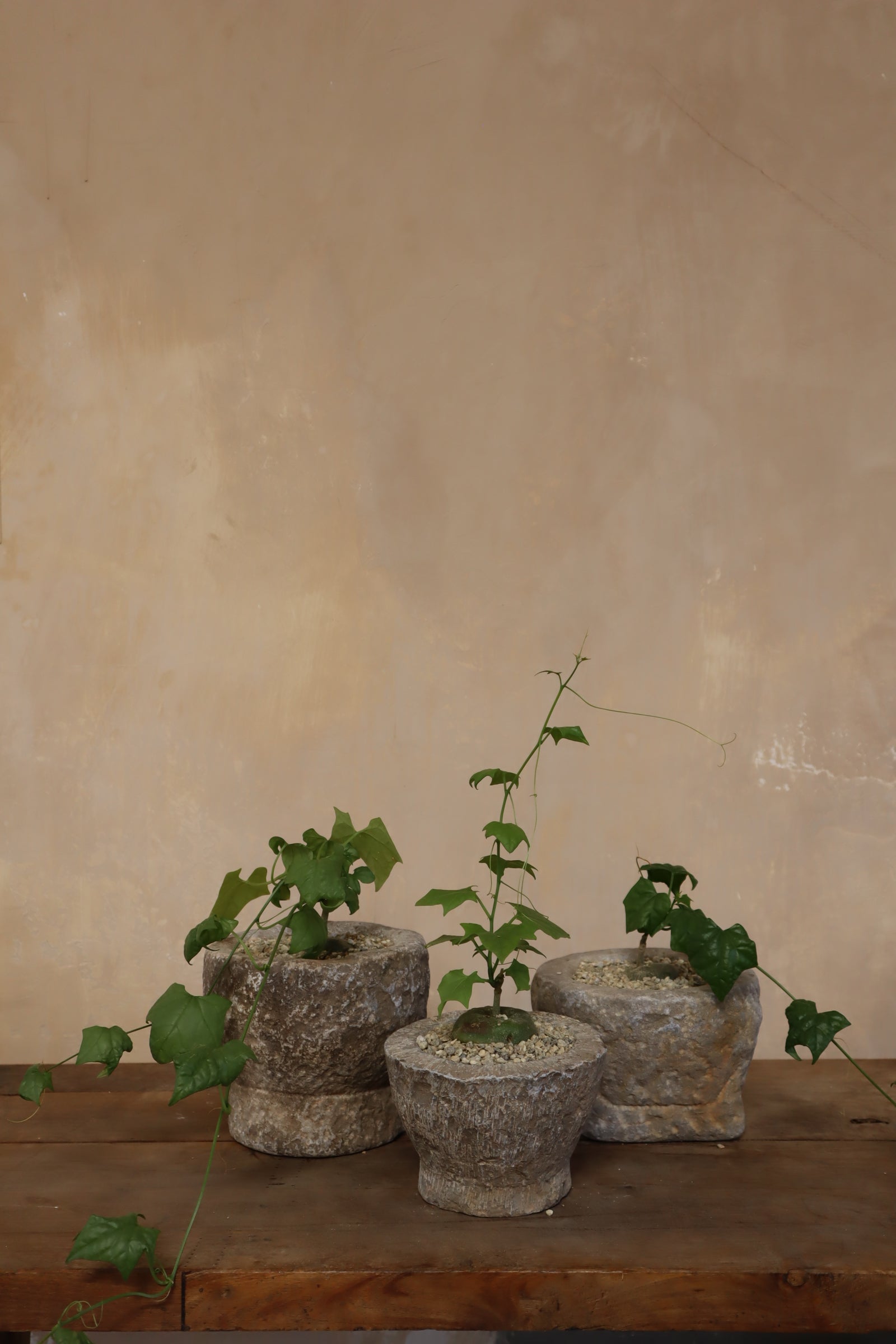

Gerrardanthus Macrorhizus in Antique Stone Garlic Mortar
Gerrardanthus Macrorhizas, commonly known as Bigfoot, is a unique caudiciform plant that is relatively easy to care for if its specific needs are met. Here are detailed care instructions to help you maintain a healthy Gerrardanthus Macrorhizas:
Light
- Sunlight: Provide bright, indirect light. Direct sunlight, especially in the intense midday hours, can scorch the leaves.
- Indoor Placement: Place near a south or west-facing window where it can receive filtered sunlight. If natural light is insufficient, supplement with a grow light.
Watering
- Watering Schedule: During the growing season (spring and summer), water the plant when the top inch of soil feels dry. Reduce watering significantly in the dormant season (fall and winter) to prevent root rot.
- Watering Method: Water deeply until all of the soil is fully saturated, ensuring thorough moisture distribution. Allow the soil to dry out completely between waterings.
Temperature and Humidity
- Temperature: Gerrardanthus Macrorhizas thrives in warm temperatures between 65-85°F (18-29°C). Protect from temperatures below 50°F (10°C).
- Humidity: Average household humidity is sufficient. The plant is tolerant of low humidity but can benefit from occasional misting in very dry environments.
Fertilization
- Feeding Schedule: During the growing season, feed with a balanced, water-soluble fertilizer diluted to half-strength every 4-6 weeks.
- Type of Fertilizer: Use a fertilizer formulated for succulents or cacti for optimal growth.
Pruning and Training
- Pruning: Minimal pruning is required. Remove any dead or yellowing leaves to maintain plant health.
- Training: The vines can be trained to grow on a trellis or support if desired. This can also help manage the plant's sprawling growth habit.
Pests and Diseases
- Common Pests: Watch for aphids, mealybugs, and spider mites. Treat infestations promptly with insecticidal soap or neem oil.
- Diseases: Overwatering can lead to root rot. Ensure proper watering practices and good air circulation around the plant.
Dormancy
- Dormant Period: Gerrardanthus Macrorhizas has a natural dormancy period in fall and winter. Reduce watering and cease fertilization during this time.
- Signs of Dormancy: The plant may drop some leaves and growth will slow down significantly.
By following these care guidelines, your Gerrardanthus Macrorhizas should thrive and bring a unique aesthetic to your plant collection. Remember, the key to success with this plant is to mimic its natural environment as closely as possible.
Choose options






